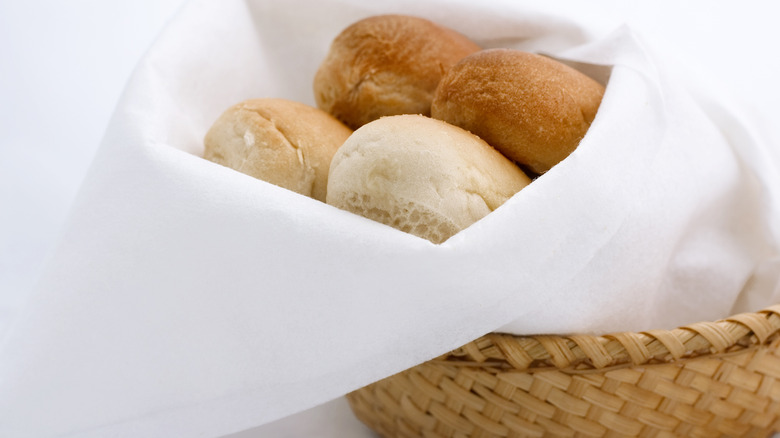The Best Way To Reheat Olive Garden Breadsticks For Maximum Freshness
Olive Garden aficionados know the popular chain of Italian restaurants for many things. Among them are its Never Ending Pasta Pass, its iceberg salad with the fan-favorite dressing, and its bottomless baskets of warm, garlic-scented breadsticks. If you happen to have some breadsticks left over when your meal is finished, you're allowed to bring them home. And now, you have the perfect ways to reheat them in either the oven or the microwave, if you are in a rush. The important thing to remember is that bread naturally goes bad quickly, and gets stale or moldy on the counter in a short period of time.
However, if you refrigerate bread to extend its shelf life, you will likely want to warm it up somehow to revive the taste and texture. And those leftover Olive Garden breadsticks really should be warmed to be their most delicious, buttery, soft selves. Here is how to do it.
Follow the instructions
If you have the time and inclination to use your oven to reheat your leftover breadsticks, you are in luck. The Olive Garden actually provides instructions to reheat their breadsticks (and, incidentally, sells breadsticks one can bake at home from scratch, if that is more your speed). Following those instructions, leave the breadsticks right in the same bag in which they were sent home, pop them into a 350 F oven, and bake until they are warm and soft. That should be about five minutes. You will know when the breadsticks are ready to eat not just by their temperature but by their texture (downright pillowy), and the scent (garlicky, buttery, and entirely irresistible).
If the bag has already been discarded, do not worry at all. Wrap the breadsticks in foil, which is both a great conductor of heat and protects them from getting over-browned or even burned.
Microwave magic
If the microwave is your preferred reheating method, there's an option for that as well. The important thing is to remember that the microwave method requires a three-pronged approach. Step one is to remove the breadsticks from the bag. The bag has a foil lining and is absolutely not microwave-safe. Once done with that all-important step, simply cover the breadsticks with two layers of paper towels. The first layer, touching the bread, should be damp, and the second layer on top should be dry. The first layer steams the bread, cooking it gently, while the second layer protects it even more from the microwave's direct heat, which could render it overcooked or hard.
Next, reduce the microwave's power while heating the bread in short intervals. This is again to ensure the bread doesn't overcook (when it should merely gently heat through). Once the breadsticks are bought back to life, only one question remains: why didn't you bring home even more of them?


